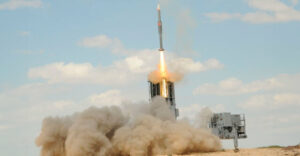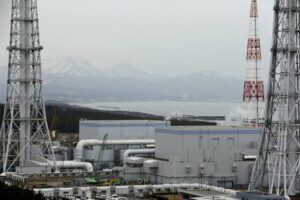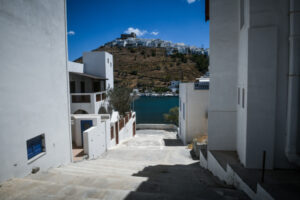Cyprus “rocked the boat” last week when it was announced that it had taken delivery of the first batch of Barak MX anti-aircraft systems from Israel’s IAI (Israel Aerospace industries) and they are already in service with the National Guard.
The acquisition of the system set the Turkish side on fire as it sees Cyprus’ deterrent capability being strengthened. But it did not come by chance as quietly and methodically for two years Cyprus had discussions which resulted in an agreement in 2022 and within 24 months the first batch of systems was delivered to it. Suffice it to consider at the same time that it was in the midst of warfare in Israel and yet by sea IAI made the first delivery in a short time.
As reported by newmoney.gr, the sister country Cyprus has chosen and finalized the Barak MX surface-to-air missile system from Israel’s IAI. This system, which covers medium and long ranges, aims to provide uniform air defense across the territory, as it is deemed to better suit the country’s needs, though this decision was not announced earlier.
It should be noted that, according to information, the IAI, which acquired Intracom Defense in 2023, had long ago submitted a comprehensive proposal for the country’s air defense at a cost aligned with Greece’s budget expectations.
The Greek Dome and Its Cost
In contrast to Cyprus, the Hellenic National Defense General Staff (HNDGS), following the decision to establish a Greek air defense “dome,” has proposed a combination of Israeli systems from IAI and Rafael. According to Foreign Minister Nikos Dendias, the cost has repeatedly been estimated at €2 billion.
SIBAT, the Directorate for Defense Cooperation of the Israeli Ministry of Defense, received Greece’s response in late November. However, based on the financial figures, skepticism may have arisen within the Greek military leadership.
This is because the cost of the three separate systems—IAI for mainland Greece (forming the backbone of the dome) and Rafael for the Aegean islands—reportedly exceeds €4.5 billion, more than double the initially estimated amount.
Key Decision Factors
With the final financial proposals in hand, the HNDGS must begin negotiations and consider several factors in its decision. These include four critical elements:
– A large stockpile of missiles,
– High reliability,
– Low cost, and
– Local production capability.
Greek officers must ensure maximum efficiency relative to the system’s operational costs while maintaining uniformity. Uniformity in weapons systems is particularly emphasized, as it is considered the best solution during critical moments, offering significant advantages, including reduced costs, high operational functionality in battlefields, and secure supply lines.
The Blue Multi Dome
The Barak MX, chosen by Cyprus as well as by the Israeli Air Force and Navy, is no random choice. As previously noted by newmoney.gr, it is a comprehensive system designed to counter a wide range of aerial threats—from short to long range (2 km to 150 km)—using a variety of interceptors of common BARAK technology for short, medium, and long ranges.
The “Blue Multi Dome” (informally named by some circles to describe the Greek Dome) must ensure integrated control of all weapons systems.
Domestic Participation
Finally, the issue of local industrial participation is crucial, as it ensures the armed forces’ immediate supply. In this context, IAI’s proposal to allocate 30% of Barak system production to the domestic defense industry and collaborate with Greek companies such as EAB, EAS, and MILTECH, alongside IDE, on broader projects, is particularly significant.
Ask me anything
Explore related questions





